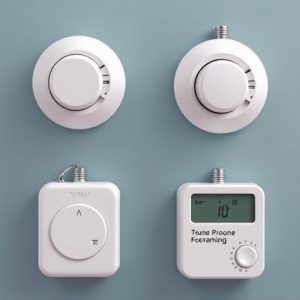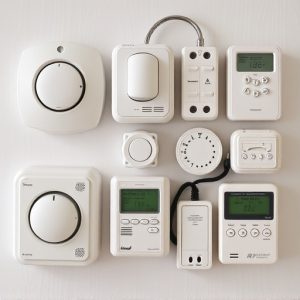Personal Alarms with Monitoring: Safety Innovations for Emergencies
Body-worn panic alarms offer a comprehensive solution for personal safety, combining 120+ dB sounds…….
Body-worn panic alarms offer a comprehensive solution for personal safety, combining 120+ dB sounds to deter assailants with GPS tracking and automatic fall detection. These compact devices provide peace of mind, enabling users to quickly alert others and emergency services in high-risk situations. Monitoring systems leverage GPS technology to pinpoint locations and dispatch help promptly, ensuring immediate assistance. Personal alarms act as lifelines, emitting powerful sounds that travel far, increasing rescue chances for those unable to communicate due to fear or injury.
In today’s world, personal safety is paramount. Body-worn panic alarms equipped with monitoring systems offer a powerful solution, providing individuals with an extra layer of protection. This article explores the features and benefits of these innovative devices, delving into how real-time tracking enhances safety during emergencies. We analyze their impact on personal security, considering the distance at which their distress signals can be heard—a key aspect in critical situations. Understanding these aspects is crucial for anyone seeking enhanced peace of mind.
- Understanding Body-Worn Panic Alarms: Features and Benefits
- Monitoring Systems: Enhancing Safety with Real-Time Tracking
- The Impact: Personal Alarms in Emergency Situations
Understanding Body-Worn Panic Alarms: Features and Benefits
Body-worn panic alarms are compact, wearable devices designed to provide personal safety and peace of mind in various situations. These alarms offer a range of features, with the primary function being to emit a loud and attention-grabbing sound when activated. The typical personal alarm can reach sounds up to 120 decibels—loud enough to startle an assailant and attract help from nearby individuals or emergency services.
Beyond the audible signal, modern body-worn panic alarms often incorporate additional benefits. Many devices include GPS tracking for real-time location monitoring, allowing users and emergency responders to pinpoint their exact position. Some models also feature automatic fall detection, which can be invaluable in certain high-risk environments. These advanced features contribute to enhanced safety and rapid response times, making body-worn panic alarms particularly useful for individuals who work or travel alone.
Monitoring Systems: Enhancing Safety with Real-Time Tracking
Monitoring systems for body-worn panic alarms have revolutionized personal safety, especially in situations where immediate assistance is crucial. These systems go beyond just triggering an alert; they enable real-time tracking, ensuring that help can arrive swiftly and precisely. When a user activates their personal alarm, whether through pressing a button or using voice activation, the signal is transmitted to a central monitoring station.
The power of these monitoring systems lies in their ability to pinpoint the user’s location, often using GPS technology, and relay this information to emergency services or designated contacts. This real-time tracking feature means that even if the wearer is unable to communicate, help can be dispatched promptly based on the alarm’s signal strength and the last known location data, including how far the personal alarm sounds can travel and identify the user’s approximate position.
The Impact: Personal Alarms in Emergency Situations
In emergency situations, personal alarms can be a lifeline. These compact devices emit high-decibel sounds designed to attract attention and deter potential threats, effectively signaling for help. The impact is significant, especially in scenarios where an individual finds themselves in peril, whether it’s during a walk home at night or while alone in a remote area. The loudness of these alarms, often reaching 120 decibels or more, ensures that the sound travels far and wide, increasing the chances of rescue.
The range of how far personal alarm sounds can travel varies based on environmental factors like terrain, weather, and obstacles. However, their powerful nature allows them to be heard over distances, even in challenging conditions. This capability is crucial for individuals who may struggle to communicate due to fear or injury, providing a physical means to alert passersby or emergency services promptly.
Body-worn panic alarms, coupled with monitoring systems, represent a significant advancement in personal safety. By enabling real-time tracking and immediate assistance during emergencies, these devices expand the reach of help beyond traditional 911 services. As we’ve seen, features like automatic fall detection, long-lasting battery life, and clear audio signals (up to 80 decibels or more) ensure that users can summon aid swiftly and effectively. The impact is profound: individuals, especially those at risk or in remote areas, gain a powerful tool for enhancing their personal safety and peace of mind.


